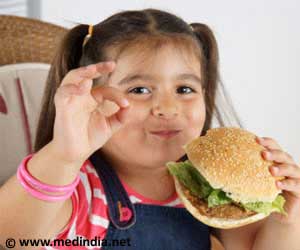Preschoolers adapt to the environment just like adults and communicate easily based on prior experiences by absorbing the language.

‘Preschoolers absorb what they have already learned in their experiences and retain these perceptions for future communication.’





Adding, "They are sensitive to how reliable the information sources are, and they can combine them in a way that respects this sensitivity." The idea that we integrate two sources of information - incoming perceptual data and expectations based on past experience, when we communicate with each other emerges from developments in machine learning.
"This framework is called the noisy-channel model that grew out of some foundational work in information theory, and now makes a big contribution to things like auto correct and text-to-speech applications," explained Yurovsky.
The team wanted to find out whether this noisy-channel model might also describe the way that children process language.
The researchers recruited 43 children (between 4 and 6 years old) and 50 adults to complete the same task. The participants saw pairs of pictures: in each pair, one picture showed a plausible scene and the other showed an implausible scene.
Advertisement
For some participants, Katie described the plausible scene (e.g. "my cat has three little kittens"); for others, Katie described a similar but implausible scene (e.g. "my cat has three little hammers").
Advertisement
The results showed that the preschoolers were able to incorporate what they had already learned about Katie in the first round when interpreting her description in the second round.
If Katie typically described the plausible scene in the first round, they were more likely to think that she said "carrots and peas." But if Katie previously tended to describe the implausible scene, they wouldn't correct her description in favor of the more logical picture - they assumed that she was referring to the implausible picture, however nonsensical it was.
"These findings show that children are not confined to trying to learn from the sounds they hear, but can use their expectations to try clean up some of the ambiguity in perceptual information using their expectations," said Yurovsky.
In a follow-up experiment, the researchers varied the amount of noise in the room when Katie was talking.
The noisy channel framework predicts that as speech becomes more difficult to hear like on a poor cell phone connection we should rely more on our expectations. And preschool-age children did exactly this: They adapted their responses to Katie's ambiguous descriptions according to both their previous experience and the noise level in the room.
Overall, the fact that such expectations played such a strong role in the preschoolers' decision making surprised the researchers: "It's pretty common in this kind of work to show that young children have some competence early, but usually if you compare them to adults you find that the effect is much larger in adults," explained Yurovsky.
Adding, "Not so here: At least by 5, and at least in this task, children adjust their expectations about what speakers are saying to the same degree as adults do."
Source-ANI








